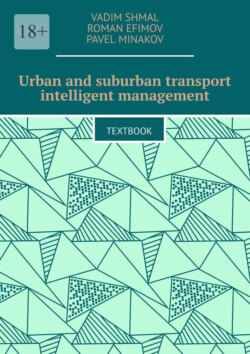Читать книгу Urban and suburban transport intelligent management. Textbook - Vadim Shmal - Страница 3
1 INTERNET OF THINGS
1.1 Internet of Things in modern society
ОглавлениеModern conditions of the transport services market, the growth of requirements for the quality of their provision, the optimization of the consistency of technological processes to ensure intermodal transport lead to an increase in the complexity of making the most rational management decisions in an operational environment. There is a need for the use of modern technical means, automation systems and digital technologies. One of the options may be distributed intelligent network management based on the use of cyber-physical systems.
Cyber-physical systems (CPS) are the integration of computing with physical processes.
The main technologies for supporting cyber-physical systems include: Internet of Things (IoT) technology, embedded systems (embedded system), Ubiquitous computing technology, special network exchange technologies.
The current trend towards the use of digital technologies for the successful implementation of the «digital economy», «digital transport» and «digital railway», as well as the transition to the organization of the work of production processes of technological enterprises to the «Industry 4.0» mode within the framework of the fourth industrial revolution involves the construction of basic processes using an ecosystem that includes basic technologies:
– Internet of Things (IoT);
– Big Data;
– Artificial Intelligence (AI);
– Robotics;
– Blockchain;
– Virtual and Augmented Reality (VR, AR);
– Digital doubles;
– 5 G;
– Additive technologies, etc.
The Internet of Things technology is actively developing both in everyday life and in the transport industry. With the help of this technology, the amount of operational information about the functioning of the main processes is significantly increased, which is an incentive for the development of data processing, transmission, storage and processing systems in order to develop optimal solutions.
The life cycle of this technology includes: collecting information through the development of sensor technologies to obtain operational data (allows the user to understand various parameters of the object or process under study and evaluate their mutual influence), using scalable and secure storage based on cloud services and building optimal technology for processing and analyzing large amounts of data using modern digital technologies.
